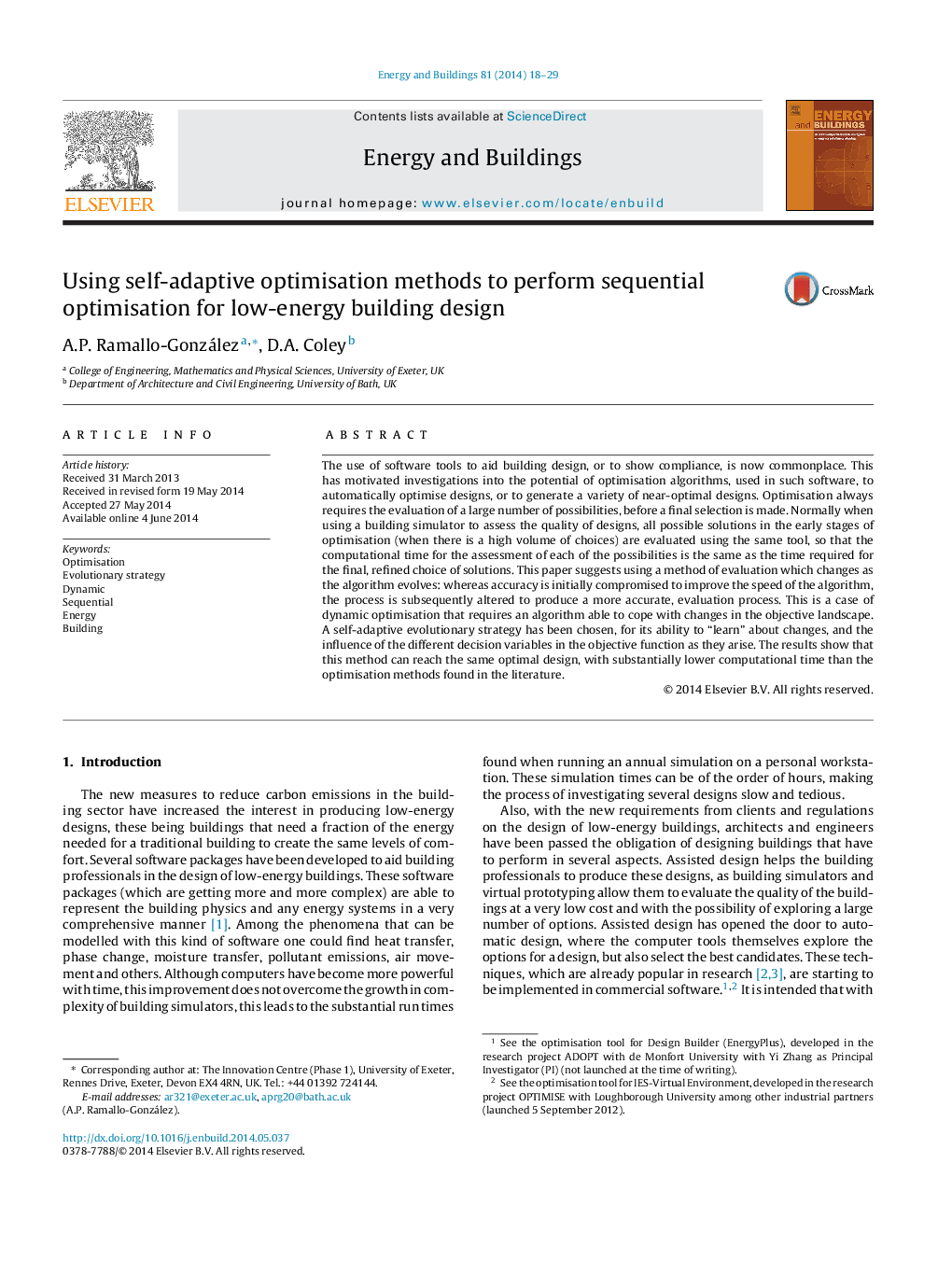| کد مقاله | کد نشریه | سال انتشار | مقاله انگلیسی | نسخه تمام متن |
|---|---|---|---|---|
| 262812 | 504051 | 2014 | 12 صفحه PDF | دانلود رایگان |
• Optimisation of buildings can be done more efficiently by using different assessment methods.
• We present an option to traditional optimisation of buildings: The CMA-ES-SA.
• The CMA-ES-SA has been proven to reduce by 90% the computational time of the optimisation.
• The CMA-ES-SA can get the same results as a GA.
• The methodology has a great potential in applications where complex simulators have to be used.
The use of software tools to aid building design, or to show compliance, is now commonplace. This has motivated investigations into the potential of optimisation algorithms, used in such software, to automatically optimise designs, or to generate a variety of near-optimal designs. Optimisation always requires the evaluation of a large number of possibilities, before a final selection is made. Normally when using a building simulator to assess the quality of designs, all possible solutions in the early stages of optimisation (when there is a high volume of choices) are evaluated using the same tool, so that the computational time for the assessment of each of the possibilities is the same as the time required for the final, refined choice of solutions. This paper suggests using a method of evaluation which changes as the algorithm evolves: whereas accuracy is initially compromised to improve the speed of the algorithm, the process is subsequently altered to produce a more accurate, evaluation process. This is a case of dynamic optimisation that requires an algorithm able to cope with changes in the objective landscape. A self-adaptive evolutionary strategy has been chosen, for its ability to “learn” about changes, and the influence of the different decision variables in the objective function as they arise. The results show that this method can reach the same optimal design, with substantially lower computational time than the optimisation methods found in the literature.
Journal: Energy and Buildings - Volume 81, October 2014, Pages 18–29
